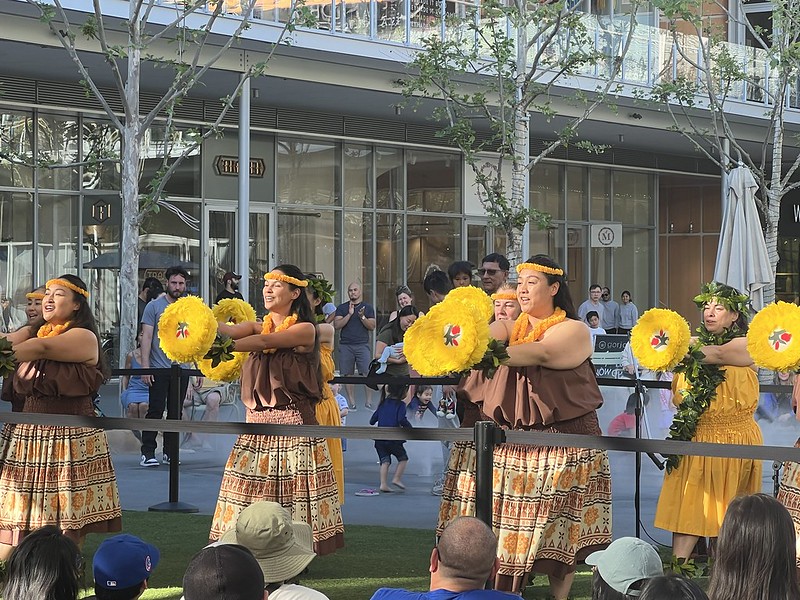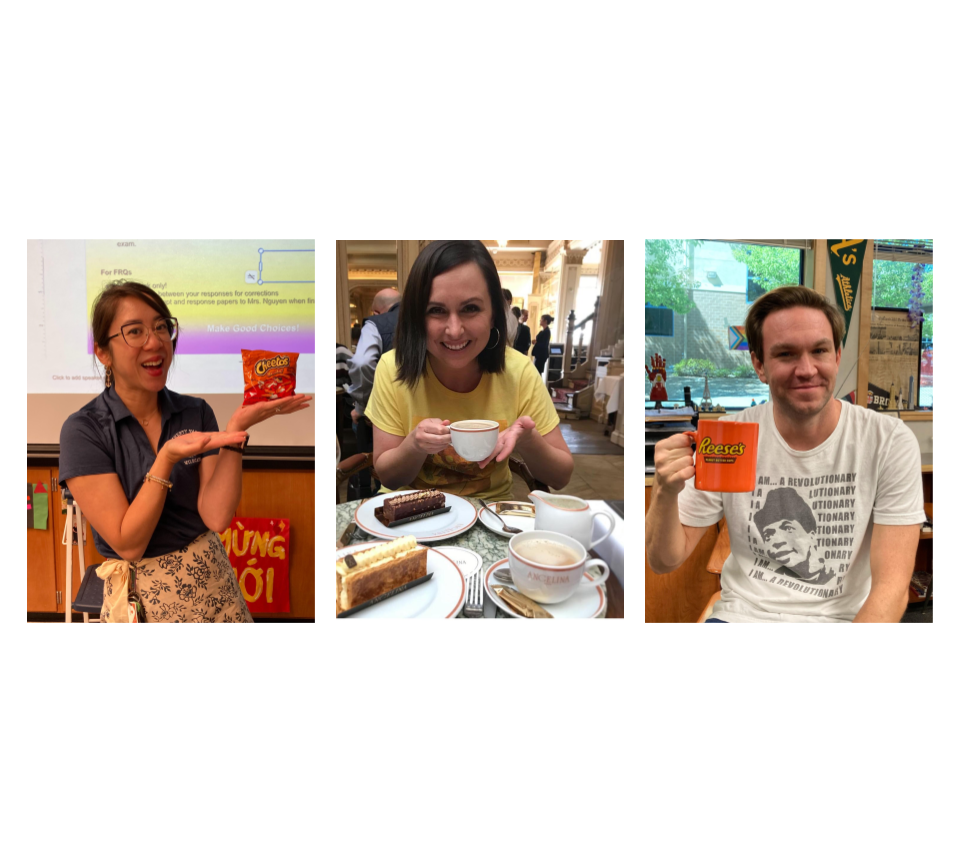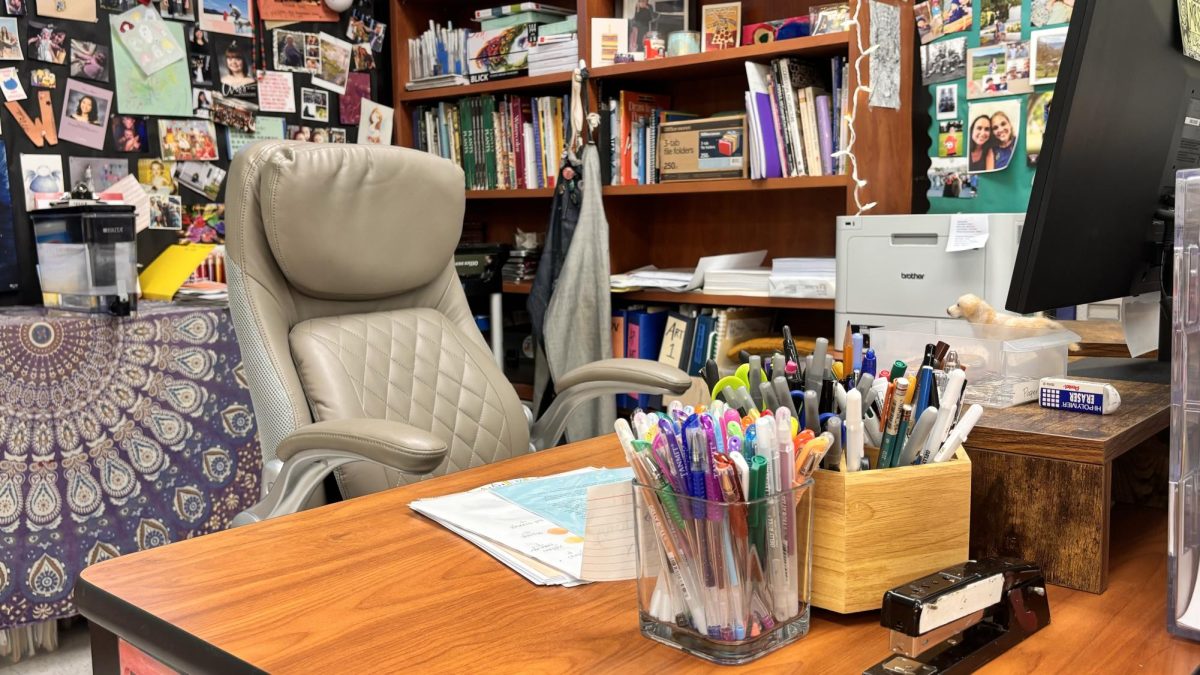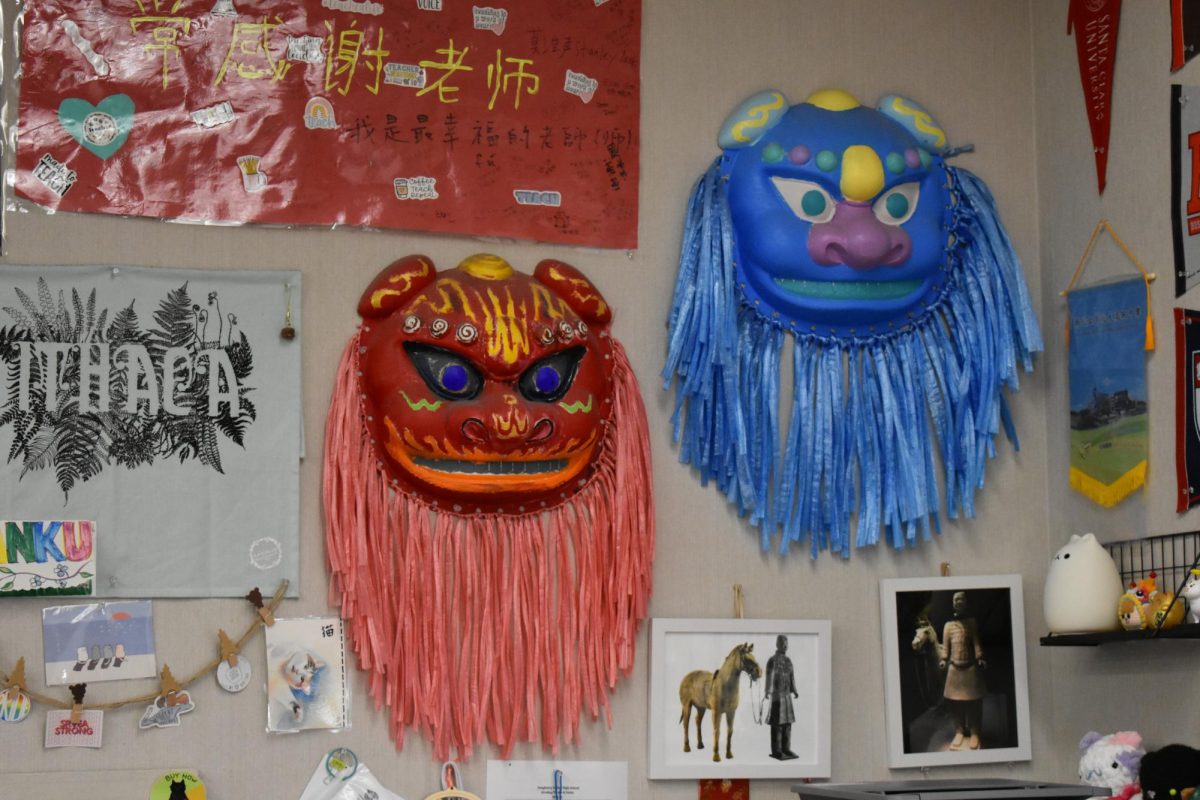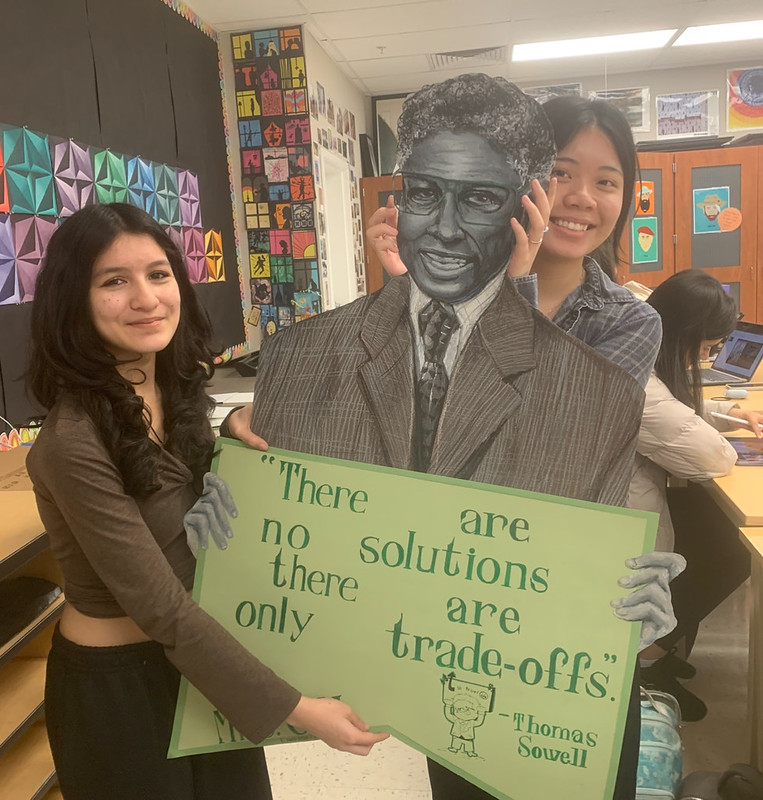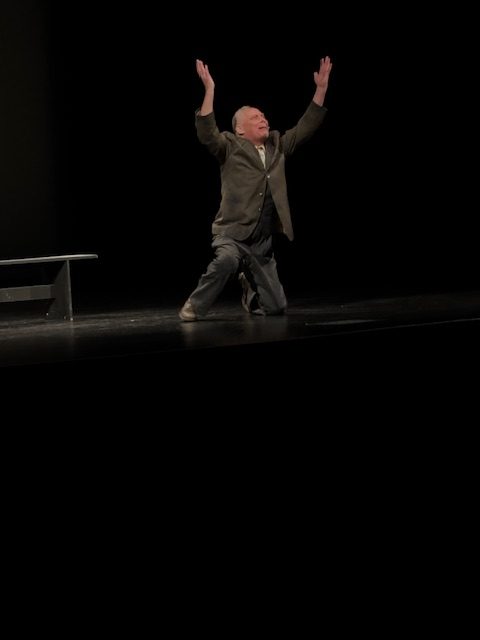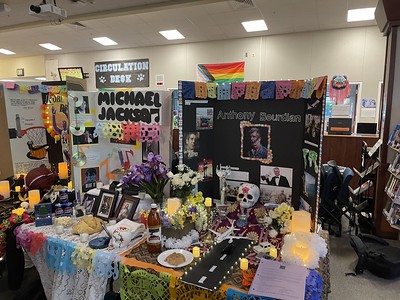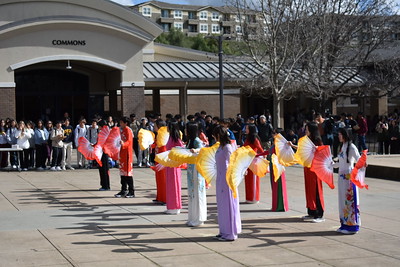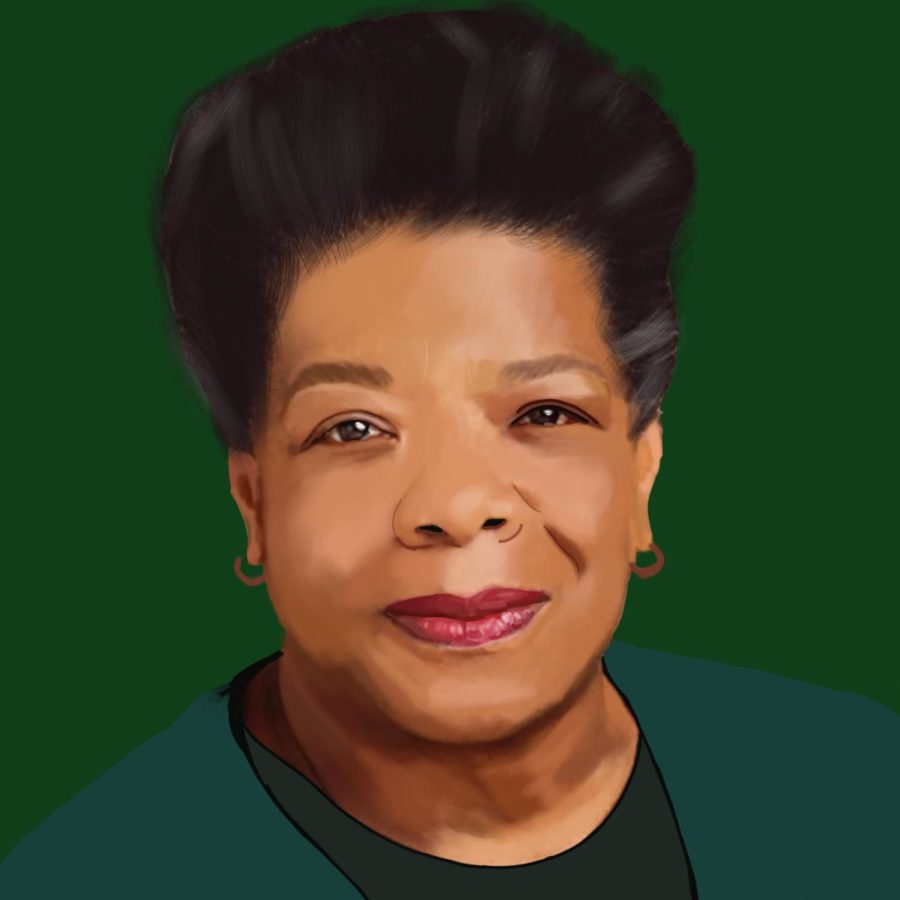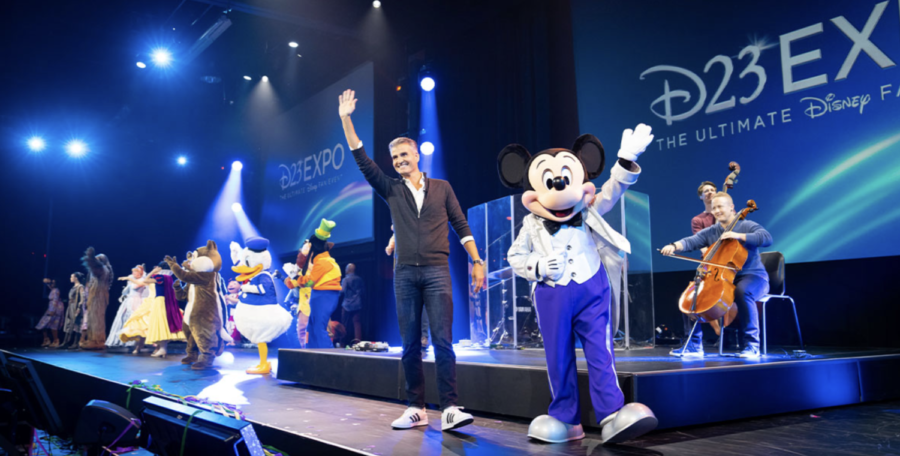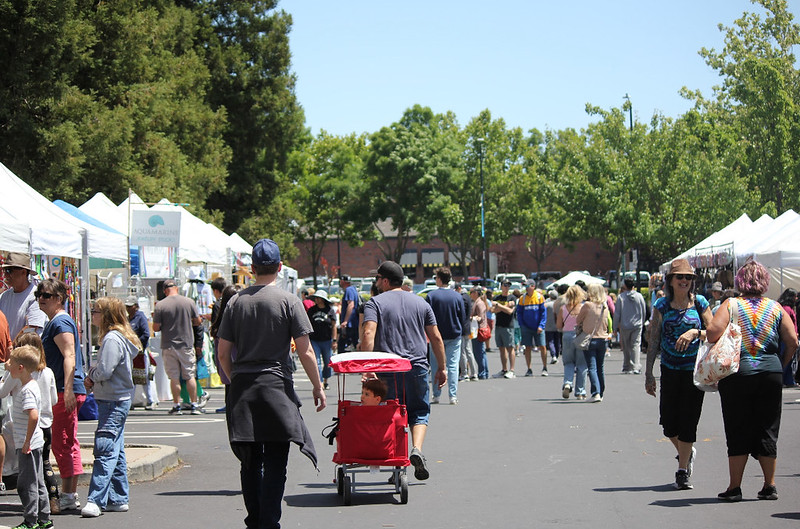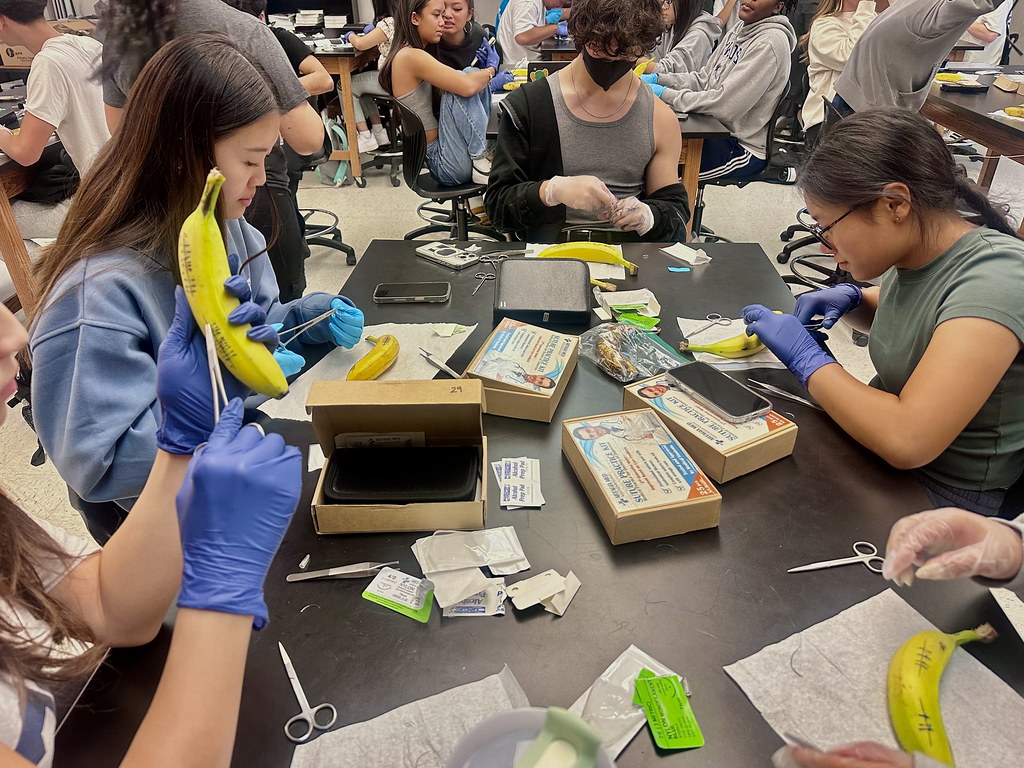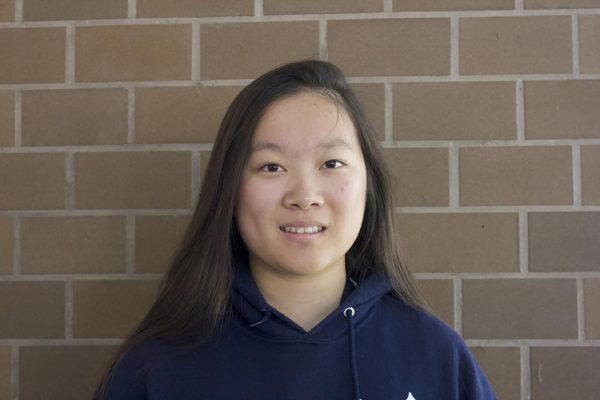Aloha Studio dancers put on a hula performance at City Center Bishop Ranch on May 8, 2025, to celebrate May Day. Event featured hula performances by both children and adults and occurred from 6 p.m. to 7 p.m.
“May Day is a big deal in the Hawaiian islands,” Catherine Kau’ilaniokalaua’e Harrill Kailimai Blankenship, the co-founder and an instructor at Aloha Studio, said. “Hawaiians come out in their best aloha clothing and their best lei to celebrate the islands.”
May Day, also known as Lei Day in Hawaii, is an annual celebration celebrating the custom of giving and receiving lei, a traditional Hawaiian wreath that can be made from flowers, leaves and other materials. The holiday was first celebrated in 1928 in downtown Honolulu. In 1929, the then Governor of Hawaii Wallace R. Farrington declared May 1 as Lei Day.
Each island has its own Lei Day symbol that consists of a color and a flower. For example, the Big Island’s color is red and the flower is a lehua blossom while for Maui, the color is pink.
Aloha Studio has been preparing for May Day performances since the beginning of the year, according to Blankenship.
The May 8 performance was Aloha Studio’s fourth annual May Day performance at City Center. Though Aloha Studio has been at the City Center for less than five years, Blankenship has had previous experiences with May Day performances, including at her previous studio of 11 years Black Sand Studio.
“I’ve been teaching for 30 years,” Blankenship said. “We’ve always performed at a May Day [celebration]. There are May Day celebrations all over the Bay Area.”
This year, some of those other May Day celebrations include the Hawaiian May Day Festival held at the Alameda County Fairgrounds and the May Day Hawaiian Festival in Hayward.
Regardless of the other May Day events, at least for Blankenship, performing at the City Center is a way to bring some of the Hawaiian culture into San Ramon.
The U.S. Department of the Interior states that native Hawaiians made up 10% of the population in San Francisco in the mid-1800s, known as the settlement Yerba Buena at the time. During World War I and World War II, the military recruited Polynesians when the war started moving towards the Pacific. It was after the world wars when employment opportunities in the military diminished that many Polynesians relocated to San Francisco, resulting in an increased Pacific Islander population.
Despite the strong population in the 1950s to 1980s, the Pacific Islander population in San Francisco and Daly City has decreased by 75% in the past 30 years, largely due to the increased cost of living in these cities. However, the number of Polynesians in San Ramon still pales in comparison to the number in San Francisco and Daly City.
According to the U.S. Census Bureau, Pacific Islanders accounted for 0.3% of the population in San Ramon in 2024. This compares to 1.1% respectively in Daly City and South San Francisco that same year. Furthermore, Daly City and San Francisco boast a total population of over 900,000 people combined as compared to 84,929 people in San Ramon as of 2023.
Accordingly, one of Blankenship’s main messages behind Aloha Studio’s May Day performance involves spreading and cultivating Hawaiian culture.
“There is value in the Hawaiian culture,” Blankenship said. “We want to keep the culture alive and thriving, and I want to pass it on to the next generation and have them take up the responsibility of carrying on the culture so it stays alive.”

